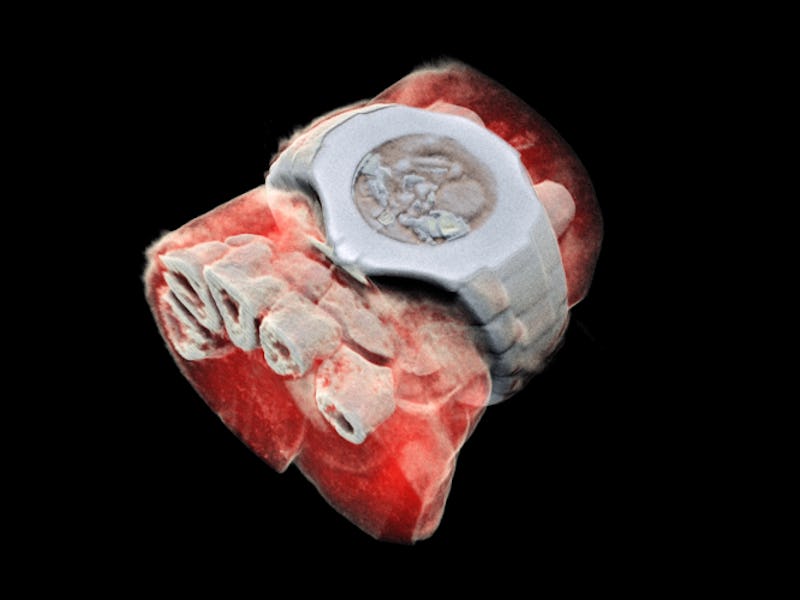The X-Rays of the Future Have Arrived
The scientists say this will soon be used for routine patient care.

German scientist Wihlem Rontgen’s 1895 discovery of x-rays hit the world like a scientific bombshell. It enabled, for the first time in history, people to peer inside of humans while they were still alive. No longer was our collective knowledge of the human body reserved to slicing open cadavers in operating theater — maladies could be pinpointed while the patient still had a fighting chance. But now, new technology has enabled us to look into the body even further and see it in a brand new way.
Half the strangeness of looking at an x-ray comes from the realization that the fuzzy grayness and jointed white lines you can see actually make up your very own flesh and bones. Now, because of technology developed at the European Organization for Nuclear Research, or CERN, people will be able to look into their bodies and see their inner bits in vibrant color — soft tissue as red, bones as white, and fat as a murky yellow. CERN describes the technology as a “breakthrough color medical scanner.”
Technically called the MARS spectral x-ray scanner, the machine is based on Medipix3 technology, which operates off read-out chips designed to detect, track and render images of particles. Medipix tech was invented in the early 2000s as a way for CERN scientists to track particles being beamed about the Large Hadron Collider, a very expensive tube that allowed for the discovery of the Higgs Boson particle in 2012. CERN says that Medipix works like a camera, “detecting and counting each individual particle hitting the pixels when its electronic shutter is open.”
This results in high-resolution, high-contrast images — and when applied to the human body, allows for the rendering of clear, accurate pictures that may change the medical diagnosis game.
Medipix technology allows for a colorful look inside the human body.
The colors above represent different energy levels of x-ray photons recorded by the Medipix technology. In a traditional x-ray machine, the rays — which are a form of electromagnetic, high energy radiation — pass through a body to an x-ray detector on the other side of the patient, creating an image that represents the “shadows” formed by all large objects inside of us — whether that’s a bone or a quarter you “accidentally” swallowed. Here, the energy levels of the x-ray photons enable the 3D imaging of numerous, more subtle bodily components, like fat, water, calcium, and disease markers.
“This technology sets the machine apart diagnostically because its small pixels and accurate energy resolution mean that this new imaging tool is able to get images that no other imaging tool can achieve,” co-creator Phil Butler, Ph.D., of the University of Canterbury said in a statement released with the research this week.
Phil and Anthony Butler with the MARS spectral x-ray scanner.
Butler and his son Anthony (a professor at Otago University) have worked on this imaging technology since 2005, with the goal of creating a scanner that can probe the human body and help physicians develop better diagnoses. Butler Jr. announced Monday that researchers have been using small versions of the scanner to study cancer, bone and joint health, and vascular diseases that cause heart attacks and strokes.
“In all of these studies,” says Butler, “promising early results suggest that when spectral imaging is routinely used in clinics it will enable more accurate diagnosis and personalization of treatment.”